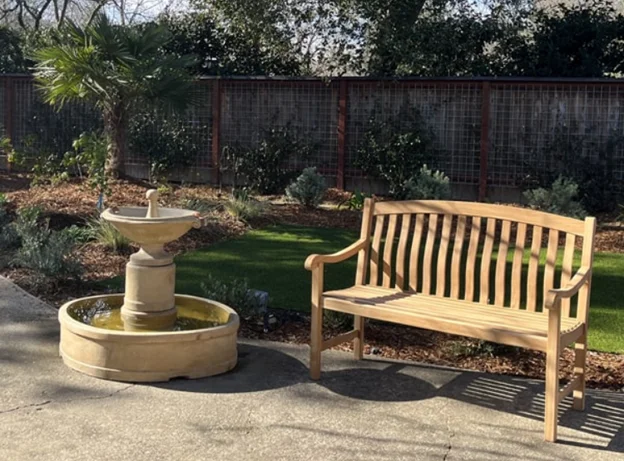HEALTH AND FITNESS
Simple Ways to Connect with Nature for Better Mental Health

Modern life delivers information at lightning speed, but our nervous systems are still wired for birdsong, rustling leaves, and slow-moving clouds. This innate pull toward the natural world may explain why even a short stroll through a park can feel like a soft exhale after a long day.
Spending time in nature is linked to many positive mental health outcomes, including improved focus, lower stress, a better mood, and a reduced risk of developing a mental health condition.
The good news is you don’t have to trek into a remote forest to enjoy these benefits. This guide unpacks the science on why nature calms the mind and shows you simple practices you can weave into city commutes, lunch breaks, and living-room moments of pause.
Table of Contents
The Benefits of Connecting with Nature for Mental Health
A growing body of research confirms that time spent in natural environments is profoundly restorative. Exposure to green spaces has a direct, measurable impact on our physiology by calming the nervous system. This connection is so vital that studies show adults with low levels of childhood nature exposure tend to have significantly worse mental health outcomes later in life.
The mental benefits are closely tied to physical ones. Nature helps improve cognitive function by allowing our brains to recover from intense focus, a concept known as Attention Restoration Theory.
It also boosts mood and can increase creativity, with some research noting a remarkable spike in creative problem-solving after spending extended time outdoors without technology.
Engaging with nature fosters a greater appreciation for the environment and can improve social connections through shared activities like community gardening or park walks. This fosters a sense of belonging and peace, reinforcing our resilience and providing a reliable source of comfort.
| Key Insight: The science is clear, even brief nature exposure has a measurable physiological effect, lowering the primary stress hormone cortisol. This is your body’s built-in reset button. |
How to Connect with Nature Using Your Five Senses
Multisensory engagement deepens the practice of mindfulness by recruiting multiple neural pathways. It pulls you out of your thoughts and into the present moment. Try one prompt from each sense this week to enhance your connection.
Sight
Go on a “color hunt” during a walk. Consciously search for as many different shades of green and blue as you can find in the plants, sky, and water around you.
Sound
For a more permanent source of natural sound, adding one of the many distinct types of water fountains for gardens by The Blissful Place to your backyard or patio can provide a constant, soothing auditory backdrop.
Alternatively, curate a 10-minute nature-soundscape playlist featuring sounds like ocean waves or gentle rain.
Smell
Keep a small pot of fresh rosemary or lavender on your desk. Periodically, gently rub the leaves and inhale slowly for four counts, then exhale for six.
Touch
Create a small “texture tray” on your desk with natural items you’ve collected, such as smooth stones, interesting seed pods, or pieces of bark for tactile grounding.
Taste
Brew an herbal tea like peppermint or chamomile. Before drinking, take a moment to smell it, then sip slowly, noticing the temperature and subtle flavor notes.
How to Connect with Nature in Urban Settings
You don’t need to be in the wilderness to connect with nature. Explore urban green spaces like pocket parks, rooftop gardens, or riverside trails. Many cities offer online maps that can help you locate the nearest plot of greenery.

You can also start a window or balcony garden. You don’t need a large yard to grow something; begin with easy-to-grow herbs like basil, chives, or mint in lightweight containers. Visiting local farmers’ markets is another great way to connect with the earthy smells and vibrant colors of seasonal produce.
When you’re stuck indoors, technology can help. Free apps stream customizable sound loops of rain, forests, or oceans. Combining the benefits of movement and nature by performing low-impact exercises in a quiet park can also integrate breath and calming sights.
| Pro Tip: Don’t let a dense cityscape stop you. The benefits begin with the nearest source of green. A single window plant, a tree-lined street, or even the sky. Proximity and consistency matter more than scale. |
How to Incorporate Mindful Activities in Natural Settings
Forest bathing, or Shinrin-Yoku, is a Japanese practice of immersing yourself in the forest atmosphere with a slow pace and open senses. If you prefer stillness, try nature meditation. Find a comfortable seat, close your eyes, and focus on the ambient sounds around you without judgment.

Simple outdoor mindfulness practices can also be powerful. Lie on the grass and perform a body scan, slowly shifting attention from your toes to your head. You can also engage all your senses while gardening by noticing the earthy smell of the soil and the different textures of the leaves.
Mindful photography can train your awareness by challenging you to capture both tiny details and expansive views. Another effective practice is mindful eating outdoors. Pack a simple picnic and pause before each bite to note the food’s color, aroma, and flavor.
Implementation Toolbox: Enhancing Your Space
To translate the calm you feel outdoors into your indoor environment, consider adding multisensory focal points that echo the natural world. This can be achieved through sound with tabletop fountains, sight with plants or art, smell with essential oils, and touch with natural-fiber throws.
Many homeowners also layer gentle water features into their design. Exploring different options can inspire choices that supply soothing sound, subtle movement, and a touch of humidity to a dry room.
Pairing a small fountain with soft lighting and a trailing plant can create an instant “calm corner” that engages both hearing and sight. Remember to mix in non-commercial options too, like a simple bowl of collected river stones. The goal is sensory balance, not perfection.
| Key Insight: The most powerful lesson is that these small, daily nature practices outperform infrequent, longer trips. A two-minute daily window gaze builds more resilience than a monthly hike, making the practice accessible to everyone. |
Bring a Little More Green into Your Day
Nature is more than a destination; it’s a practice. Choose one small sensory ritual from this guide, perhaps a five-breath window-gaze, a lunchtime micro-walk, or adding the gentle hush of a fountain. Notice how your mood shifts over the next week. The path to greater calm and clarity often begins with a single, mindful step outdoors, or even just toward your nearest houseplant. Your mind, body, and community will thank you.
-

 GENERAL6 months ago
GENERAL6 months agoChristofle – For Those Who Dream of Family Heirloom Silver
-

 SPORTS8 months ago
SPORTS8 months agoDiscover the World of Football with Streameast: Watch Your Favorite Leagues and Tournaments
-

 GENERAL4 months ago
GENERAL4 months agoUncovering the World of кинокрадко: The Dark Side of Film Piracy
-

 GENERAL2 months ago
GENERAL2 months agoATFBooru: Anime, Gaming, and Subculture Imageboard























